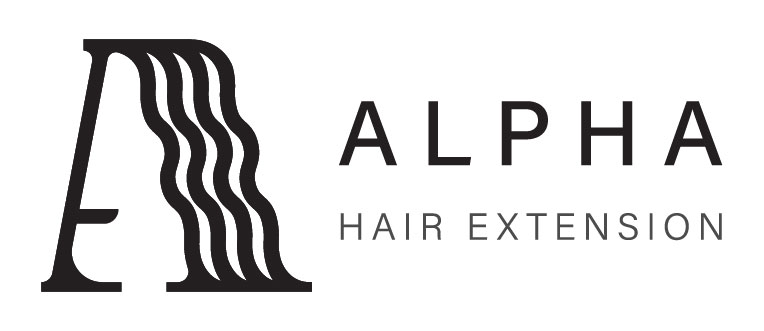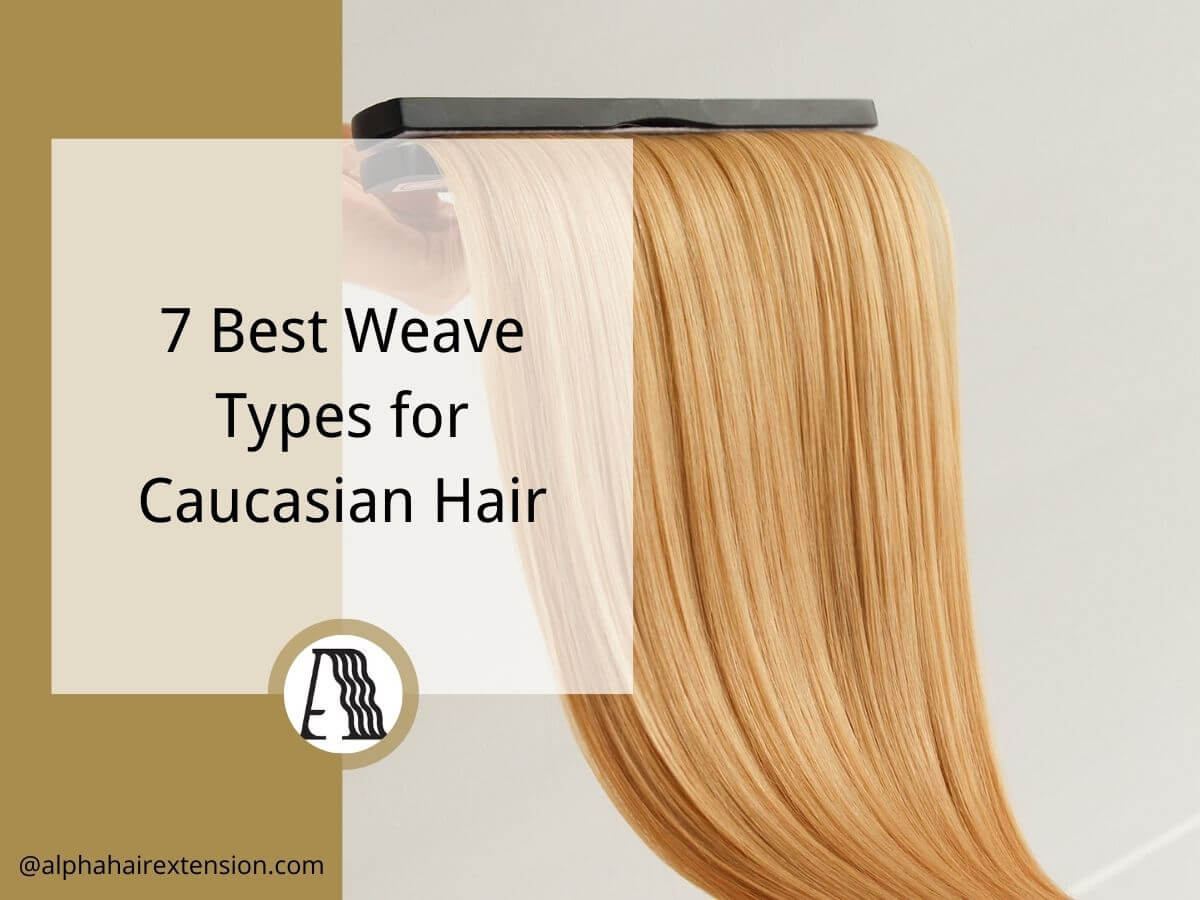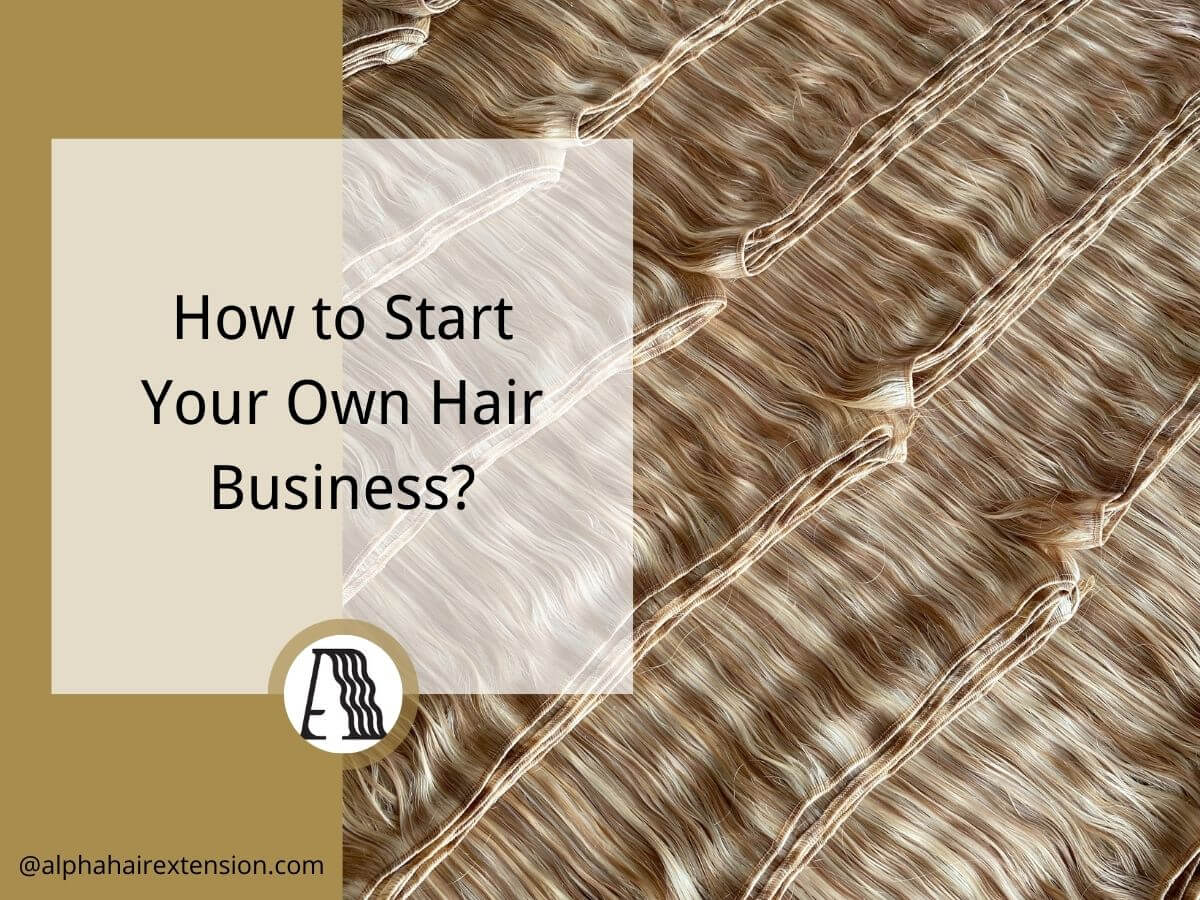A few years ago, I stocked tape-in hair extensions in my store, thinking they were the best option for customers. They sold well at first, but then the complaints started rolling in:
- “The tapes are too visible in fine hair.”
- “The adhesive feels stiff and uncomfortable.”
- “Is there something more natural-looking?”
I started researching and testing alternatives. That’s when I came across invisible tape hair—a newer version designed to blend better and feel lighter. Customers who had struggled with traditional tapes started requesting them by name.
If you sell, distribute, or manufacture hair extensions, understanding the differences between tape hair and invisible tape hair is essential.
This article will give you a side-by-side comparison—covering appearance, durability, customer demand, and profit potential—so you can stock the right products and meet market demand.
So let’s start!
1. What is Tape Hair?
When I first started selling hair extensions, tape hair was one of my biggest sellers. Salons ordered it regularly, and clients loved how quickly it transformed their look. It seemed like a no-fail product.
But after a while, I started hearing the same concerns from stylists:
- Visibility: “It’s easy to apply, but the tapes are too obvious in fine hair.”
- Adhesive Issues: “Clients love the volume, but they come back complaining about slipping or stiffness.”
- Blending Challenges: “The hair quality is great, but I wish there was a way to make it blend better.”
That got me thinking: Was tape hair still the best choice, or was there something better?
How Tape Hair Works
If you’ve worked with hair extensions, you know that not all methods are created equal. Tape hair is semi-permanent, meaning it stays in place for several weeks at a time.
The installation process is fast and efficient, making it a great choice for salons that want to book more clients in a day. Here’s how it works:
- Sectioning The Hair: A stylist sections the natural hair and removes the backing from the adhesive strip.
- Placing The First Weft: One tape weft is placed underneath a small section of hair.
- Creating The Sandwich: A second tape weft is pressed on top, creating a “sandwich.”
- Securing The Bond: A flat iron or pressing tool may be used to set the bond.
I remember watching a stylist install tape hair for the first time and thinking: “Wow, that’s it?” The entire process takes 30-60 minutes, making it a profitable, high-turnover service for salons.
Materials That Make A Difference
If you’re in the business of selling hair extensions, you know that quality matters. Tape extensions come in a range of materials, and choosing the right one can impact client satisfaction, reorders, and your reputation.
Most high-end tape extensions use:
- Hair Type: 100% Remy Human Hair – Cuticles remain intact, reducing tangling and increasing longevity.
- Adhesive Quality: Medical-Grade Adhesive – A strong, skin-safe glue that holds up through multiple wears.
- Tape Base: Polyurethane (PU) Tape – A flexible backing that keeps the tapes flat against the head.
On the flip side, I’ve seen distributors cut costs by selling non-Remy hair blends or cheap adhesives. That almost always leads to unhappy salons, frustrated clients, and lower reorder rates.
Lifespan And Maintenance – What To Know As A Business Owner
Here’s what surprised me when I first started selling tape hair: The extensions last way longer than the adhesive. The hair itself can last 6-12 months, but the adhesive strips need replacement every 6-8 weeks due to natural hair growth.
Most salons offer a re-taping service, which keeps clients coming back. That means steady income for stylists and repeat orders for distributors. The process involves:
- Removing Old Adhesive: The wefts are carefully cleaned to remove residue.
- Applying Fresh Tape: New adhesive strips are applied to ensure a strong hold.
- Reinstalling Closer To The Scalp: This prevents a grown-out look and maintains a seamless blend.
Stylists who understand this process tend to retain clients longer, and distributors who offer high-quality replacement tapes often get repeat business.
Is Tape Hair Still Worth Selling?
For years, tape hair was the go-to extension method, and for good reason. It’s affordable, lightweight, and reusable, making it a profitable choice for salons and wholesalers.
But lately, I’ve noticed more stylists asking about invisible tape hair. They want something that blends better, feels more comfortable, and works for a wider range of clients.
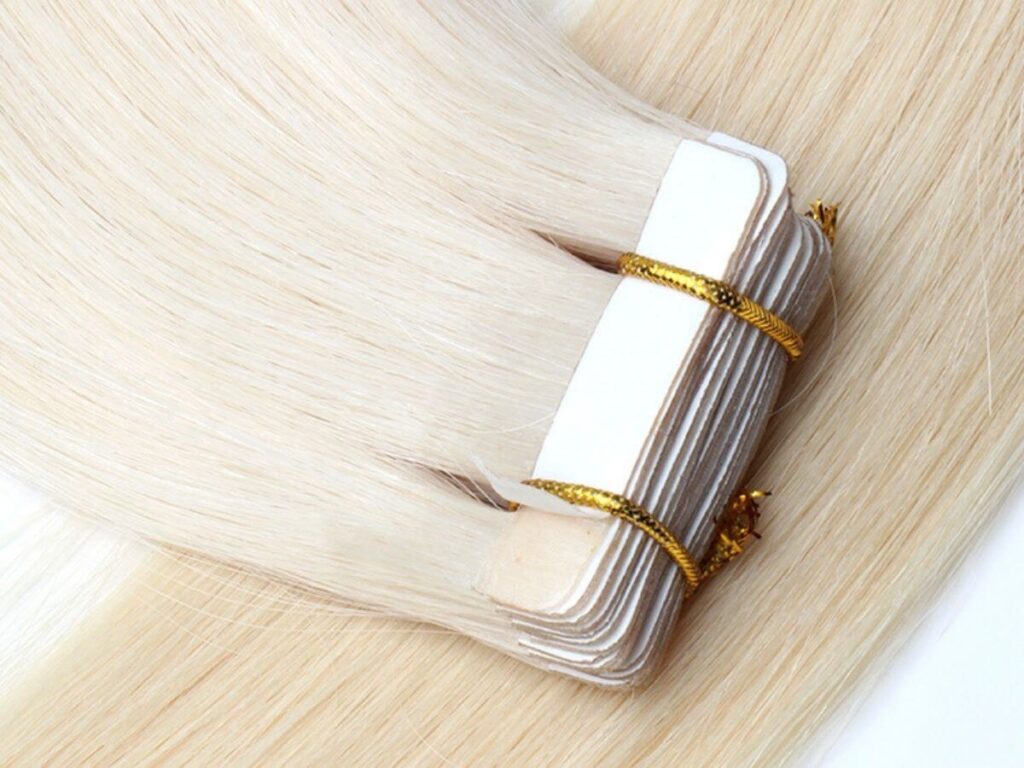
2. What is Invisible Tape Hair?
The first time I saw invisible tape hair, I had one question: “Why isn’t everyone using this?”
At first glance, it looks similar to traditional tape hair extensions. But there’s a big difference—the tape base is designed to blend seamlessly into the natural hair. Instead of a visible adhesive strip, the top layer of the tape is covered with hand-injected hair, making it nearly undetectable.
For salon owners, this is a game-changer. Clients with thin or fine hair often complain about regular tape-ins showing through. Invisible tape hair solves this problem by creating a more natural, discreet look.
What Makes Invisible Tape Hair Different?
The key difference is the construction. Here’s what sets it apart:
- Camouflaged Tape Base: Instead of a shiny, exposed tape strip, the top layer is covered with hand-placed hair strands.
- Lighter And More Flexible: The tape is thinner, making it feel more comfortable on the scalp.
- Better Blending: The transition from natural hair to extension is nearly invisible.
One stylist I work with told me: “Once a client tries invisible tape hair, they don’t go back to traditional tape-ins.”
How Long Does Invisible Tape Hair Last?
The hair itself lasts 6-12 months, depending on the quality and care. However, like standard tape-ins, the adhesive needs replacing every 6-8 weeks as the client’s hair grows.
For businesses, this means:
- Higher Client Satisfaction: Salons can offer a premium service with a natural finish.
- Stronger Repeat Business: Clients return for maintenance and reinstallations.
- Higher Price Point Potential: Invisible tape hair is often sold at a premium due to its advanced construction.
Should You Stock Invisible Tape Hair?
Invisible tape hair is more than just an upgrade—it’s an opportunity to meet growing market demand. Salons are actively looking for extensions that provide better blending and higher-end results. If you’re selling or distributing hair extensions, this product is worth considering.
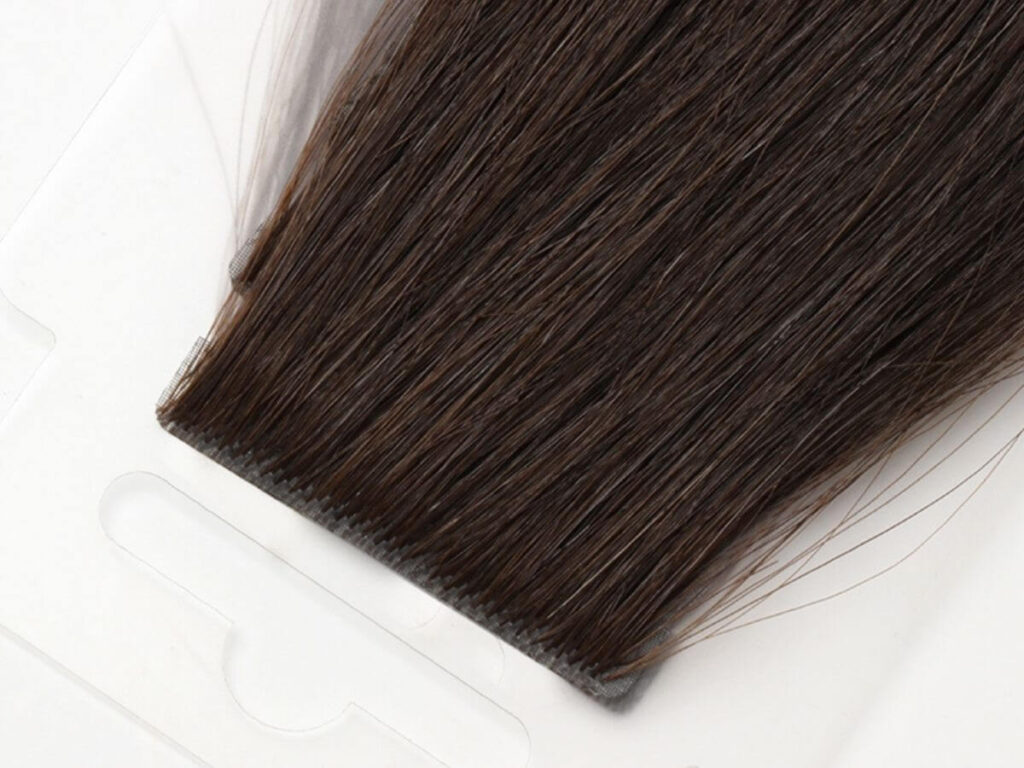
3. Tape Hair vs Invisible Tape Hair: Key Difference
Choosing the right type of hair extension can be challenging, especially when both options have their unique strengths. To help you make an informed decision, here’s a detailed comparison of tape hair and invisible tape hair:
| Feature | Tape Hair | Invisible Tape Hair |
| Appearance | Can be noticeable, especially on thin hair | Blends seamlessly, making it undetectable |
| Durability | Lasts 6-8 weeks with proper care | Holds better due to improved adhesive technology |
| Client Base | Best for clients with medium to thick hair | Ideal for clients with fine or thin hair |
| Price Point | More affordable and widely accessible | Higher cost due to advanced technology |
| Application & Maintenance | Requires professional installation and more maintenance due to adhesive breakdown | Requires professional installation but fewer touch-ups since the adhesive holds longer |
| Reusability | Can be reused multiple times with retaping | Also reusable but lasts longer before retaping is needed |
| Comfort Level | Can feel slightly bulky depending on hair type | Ultra-lightweight and more comfortable to wear |
| Blending Effect | May show visible tape in lighter or thinner hair | Virtually invisible and blends naturally with scalp |
| Styling Flexibility | Works well with most hairstyles but tapes can be visible in updos | Can be styled in various ways with minimal |
4. Factors to Consider When Choosing Between Tape Hair & Invisible Tape Hair
Choosing between tape hair and invisible tape hair isn’t just about preference—it’s about what makes the most sense for your business. Every decision, from which extensions to stock to how to market them, impacts customer satisfaction and overall profitability. Here are some key factors to help you make an informed choice.
Client Demographics
Understanding your client base is essential. If your customers have fine or thin hair and prioritize a seamless blend, invisible tape hair is the better choice. However, if affordability is a bigger concern and they have medium to thick hair, tape hair remains a strong option. Knowing your customers’ needs will help you decide which product fits best.
Pricing Strategy
Invisible tape hair comes with a higher cost, but it offers premium quality and better longevity. If your business caters to high-end clients, this can be a profitable investment. On the other hand, if your clients prefer budget-friendly extensions, tape hair is more cost-effective and accessible. The right pricing strategy depends on your market positioning.
Supplier Reliability
Not all hair extensions are made equal, and supplier reliability plays a huge role in quality control. Some manufacturers cut corners, leading to weak adhesives and inconsistent hair texture. Always source from trusted suppliers, test products before large orders, and prioritize quality over short-term savings. A good supplier means fewer complaints and happier customers.
Maintenance Requirements
Both tape hair and invisible tape hair require regular maintenance, but invisible tape hair tends to last longer between appointments. If your clients prefer low-maintenance solutions, invisible tape hair may be the better choice. However, if your clientele is accustomed to frequent salon visits, tape hair is still a viable, budget-friendly option.
Conclusion
Choosing the right extensions isn’t just about trends—it’s about what makes sense for your business. Tape hair offers affordability and flexibility, while invisible tape hair delivers a premium, seamless look.
Stocking the right product means happier clients, repeat orders, and higher profitability. The extension market is evolving—are. Are you keeping up?
Don’t wait until your competitors make the switch first. Upgrade your inventory and stay ahead of the curve.
Which option will help your business grow?
Let’s find out together. Contact us today!
Explore Related Resources
Want to see more products? We’ve got plenty of options that might just be the perfect fit for you:
- Tape-In Hair Extension
- I-Tip Hair Extension / Stick Tip Hair Extension
- Genius Weft/Flat Weft Extension
Still haven’t found what you’re looking for? Don’t hesitate to contact us. We’re available around the clock to assist you.
